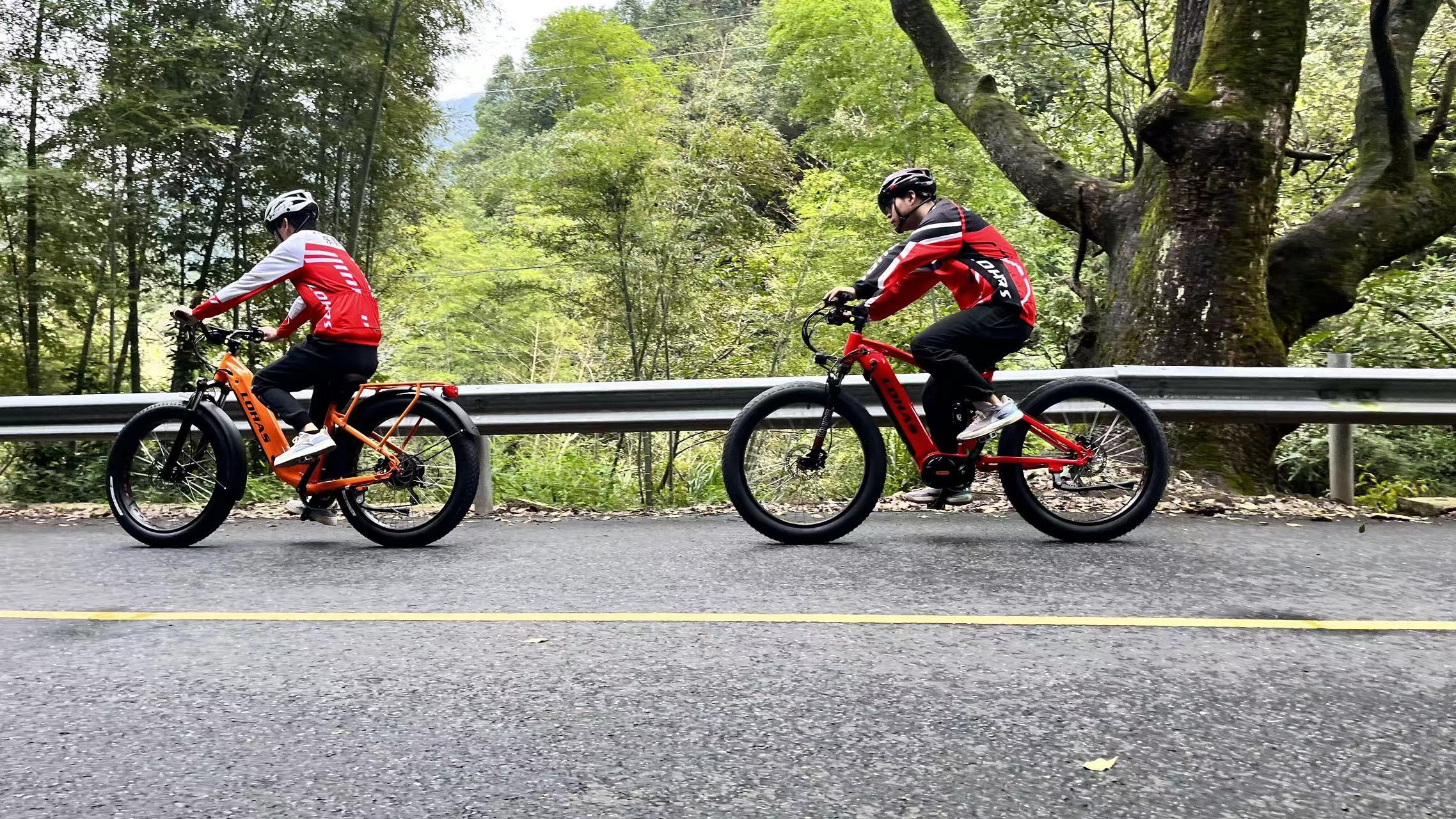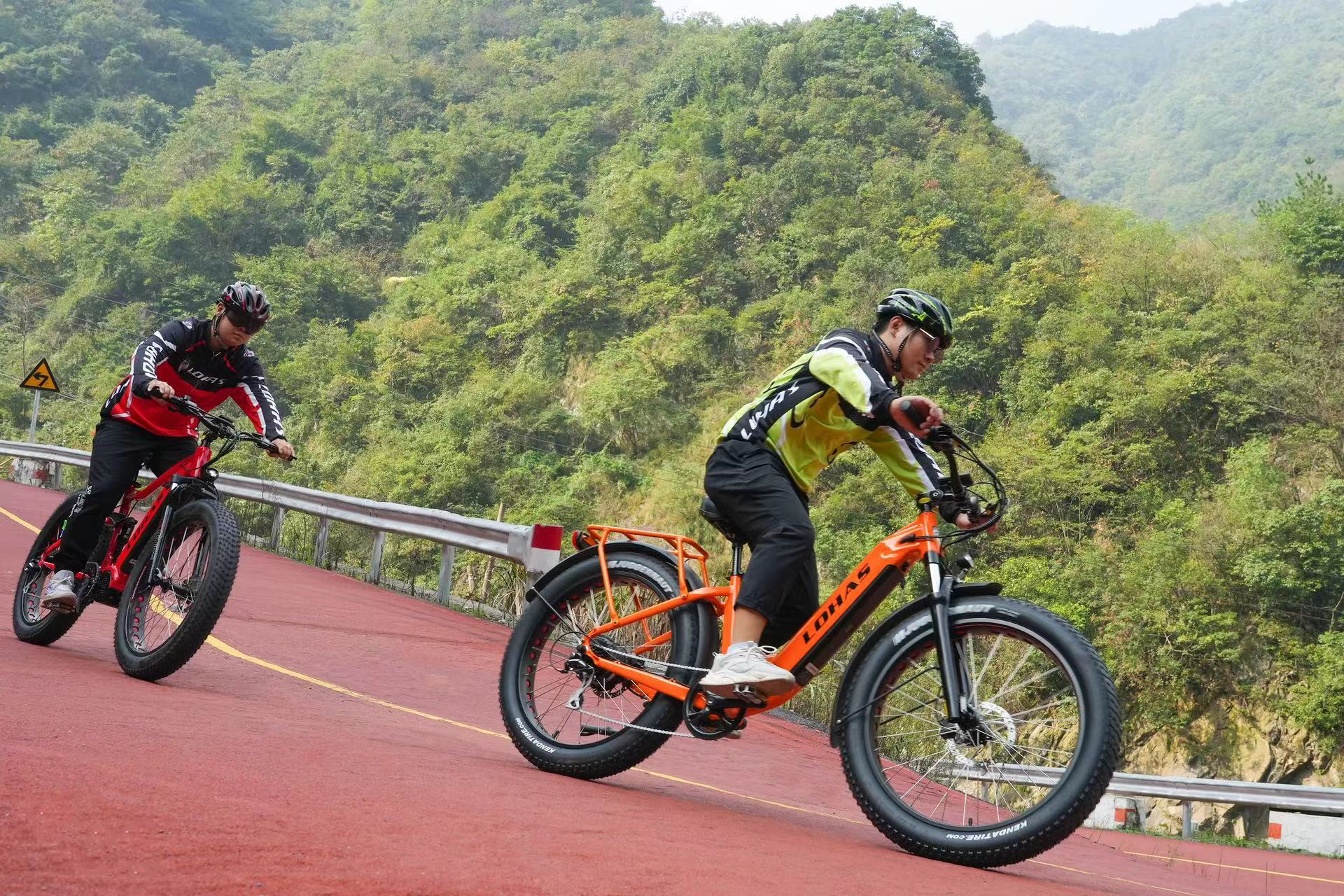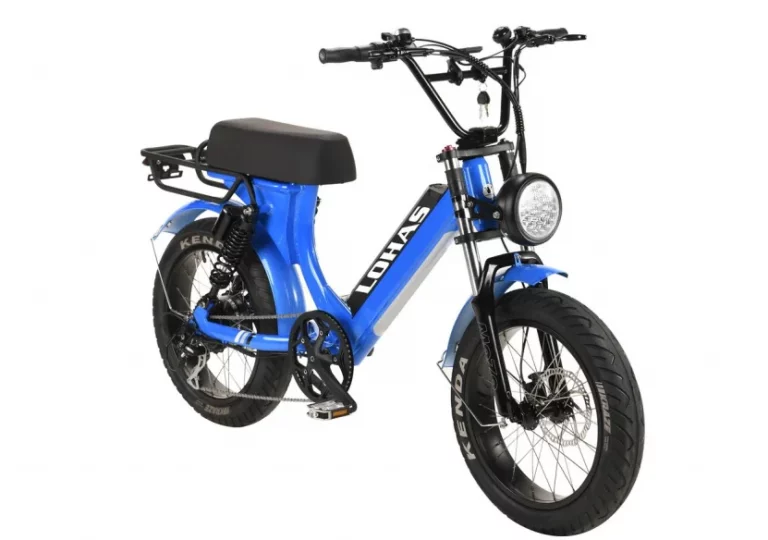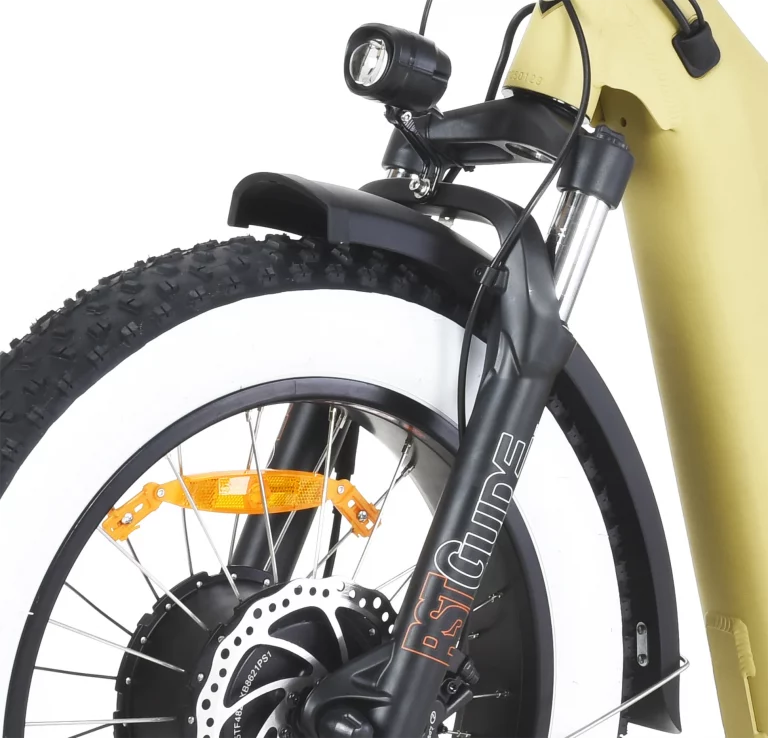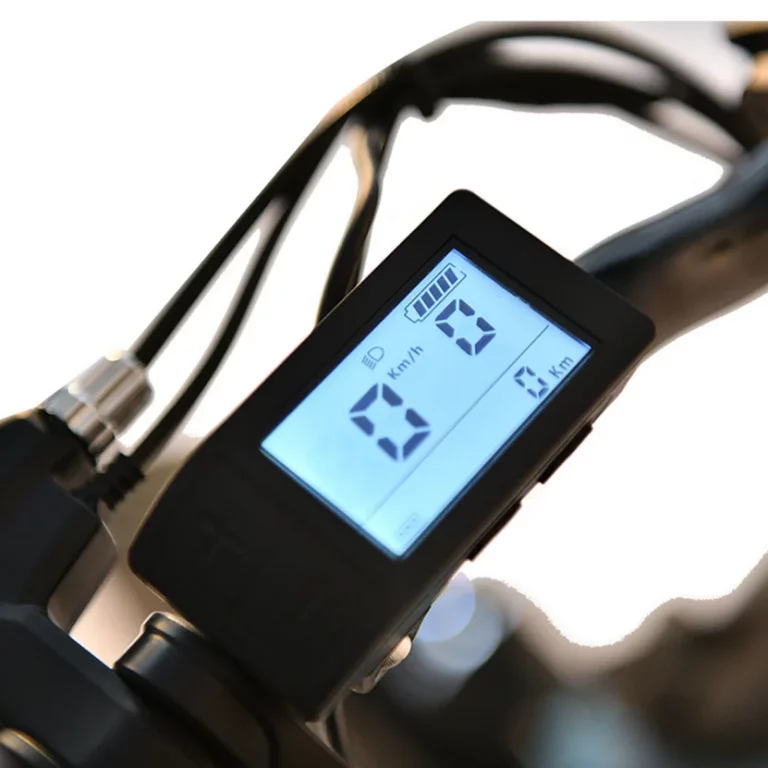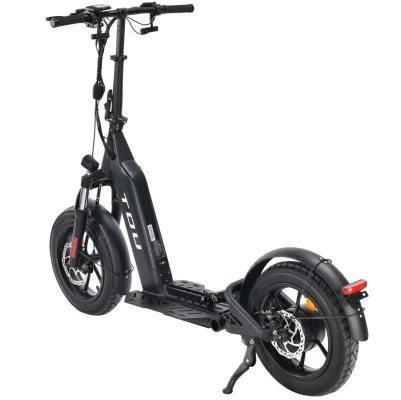When contemplating the growing trend of using electric bikes as a mode of transport, many potential riders often ponder a crucial question: Is continuous pedaling necessary when riding an electric bike? This article seeks to clarify how these advanced vehicles work by offering insights into their definition, various types, and the importance of pedaling in their operation.
As one of the famous brands in the production of electric bicycles and scooters, Yongkang LOHAS Vehicle Co., Ltd is committed to the research and development and manufacturing of related products. LOHAS Vehicle is a modern integrated enterprise specializing in the design, manufacturing, and distribution of electric bicycles and electric scooters, dedicated to the production of high quality electric bicycles and electric scooters.
Understanding Electric Bikes
Definition and Functionality of Electric Bikes
An electric bike, commonly referred to as an e-bike, combines the best features of a traditional bicycle with the advanced technology of an electric motor. This motor can assist the rider by providing additional power, thereby making cycling easier, especially on challenging terrains or during long commutes. The core components of an electric bike include a battery, a motor, a controller, and sensors that help regulate the assistance provided to the rider. These bikes are designed to offer a seamless transition between manual pedaling and the motor’s assistance, creating a versatile and user-friendly transportation option.
Types of Electric Bikes
When exploring electric bikes, it’s important to understand that they come in various forms, each catering to different needs and preferences. The two main types are Pedal Assist (Pedelec) and Throttle-Controlled e-bikes.
Pedal Assist (Pedelec)
Pedal Assist, or Pedelec, electric bikes require the rider to pedal to activate the motor. This type of e-bike senses when the rider is pedaling, and the electric motor provides proportional power accordingly. The harder you pedal, the more assistance the motor gives. This ensures that the cycling experience feels natural while significantly reducing the effort required. Pedelec e-bikes are particularly popular among commuters and fitness enthusiasts who want to maintain the essence of cycling while benefiting from motor assistance.
Throttle-Controlled E-Bikes
Throttle-Controlled electric bikes, conversely, do not always require pedaling to activate the motor. These e-bikes come with a throttle, typically situated on the handlebars, allowing the rider to twist or press it to manage the motor and drive the bike forward. This variety of e-bike provides a practical option for individuals who need to travel short distances without much physical effort or for those who want an occasional break from pedaling. Throttle-Controlled e-bikes are appreciated for their adaptability and user-friendly operation.
The Role of Pedaling in Electric Bikes
How Pedal Assist Works
Pedal Assist technology integrates several sensors to gauge the rider’s pedaling activity. Typically, these sensors measure factors like pedal speed, pedal torque, and bike speed. When you start pedaling, the sensors detect your effort and send signals to the motor to provide the appropriate level of support. The beauty of this system lies in its simplicity and efficiency. Pedal Assist e-bikes feel very much like traditional bikes, but with an extra boost that makes uphill climbs and long rides more enjoyable and less physically demanding. Furthermore, most Pedal Assist electric bikes come with settings that allow riders to adjust the level of assistance, tailoring the ride to their specific needs and preferences.
Throttle Mode Explained
Throttle Mode is another crucial aspect of some electric bikes. In this mode, the motor can be activated independently of pedaling. The rider uses a throttle mechanism, which could be a twist grip or a thumb lever, to control the speed of the bike. This setup allows riders to accelerate and cruise without the need for constant pedaling. Throttle-Controlled electric bikes are particularly useful in urban settings, where frequent stops and starts are common, as well as for riders who may have physical limitations that make continuous pedaling challenging. It’s a versatile feature that provides a different kind of convenience compared to Pedal Assist systems.
In conclusion, whether you need to constantly pedal an electric bike depends on the type and mode of the bike you are using. Understanding these differences is essential in choosing the right electric bike for your needs. Both Pedal Assist and Throttle-Controlled e-bikes offer unique advantages, ultimately enhancing the riding experience and expanding the range of options available to cycling enthusiasts. Whether you’re looking to ease your commute or enjoy leisurely rides, there’s an electric bike designed to meet your preferences.
Benefits of Pedaling on an Electric Bike
Health and Fitness Advantages
One of the key advantages of riding an electric bike is the positive effect on health and fitness. Consistent cycling can boost cardiovascular health, improve muscle tone, and assist in weight control. Despite the motor assistance, pedaling ensures riders engage in substantial exercise, which can enhance overall fitness levels. Additionally, pedaling strengthens lower body muscles like the calves, thighs, and glutes, contributing to better muscular endurance. This activity can also build stamina over time, making daily tasks easier to manage and improving overall well-being.
Range Extension Benefits
Pedaling an electric bike not only benefits the rider’s health but also extends the bike’s range. When the rider engages in pedaling, it reduces the load on the motor and battery, allowing the bike to travel further on a single charge. This is particularly advantageous for long commutes or extended rides in areas where charging stations might be sparse. By combining human power with motor assistance, riders can maximize efficiency and ensure they can reach their destination without worrying about depleting the battery. Additionally, the habit of pedaling can become a natural part of the riding experience, blending exercise with the practical benefit of increased travel distance.
Scenarios Where Constant Pedaling is Advantageous
Uphill Travel and Rough Terrain
In certain situations, constant pedaling becomes advantageous and practically necessary, such as when traveling uphill or navigating rough terrain. Uphill paths require more power, and although the motor provides significant assistance, pedaling helps in maintaining balance and control. The combined forces of human effort and motor power make ascending slopes smoother and less strenuous. Similarly, rough terrains that include gravel or uneven surfaces demand additional effort. Constant pedaling in these conditions ensures better traction and stability, reducing the likelihood of accidents and making the ride safer and more enjoyable.
Battery Preservation Strategies
Another scenario where continuous pedaling proves beneficial is in strategies for battery preservation. Frequent pedaling helps conserve battery life, which can be crucial during long-distance journeys or when access to charging stations is limited. By contributing your own power, you reduce reliance solely on the motor, thereby extending the battery’s operational time. This strategic approach to riding not only optimizes the handling of the electric bike but also fosters a more sustainable and eco-friendly mode of transport.
To conclude, although pedaling is not a requirement for the functioning of an electric bike, it offers a multitude of advantages that improve the riding experience. Whether for health benefits, increasing range, navigating difficult terrains, or conserving battery power, pedaling enhances the overall journey. Knowing when and how to pedal efficiently can greatly impact your ride, making it more enjoyable and effective.
Changing Perceptions of Electric Biking
Historical Misunderstandings
Historically, there have been numerous misunderstandings surrounding electric bikes. Initially, many people perceived them as merely scooters or mopeds, rather than a hybrid between traditional bicycles and electric vehicles. This misconception led to confusion about how they functioned, particularly regarding the necessity of pedaling. Early models of electric bikes also had limited technology, making them less efficient and reliable, which contributed to a somewhat skeptical view of their practicality and effectiveness. Additionally, there was a belief that electric bikes were only suitable for individuals who were unable to ride conventional bicycles, thereby pigeonholing them into a niche market.
Modern Developments in Technology
In recent years, advancements in technology have significantly changed the landscape of electric biking. Modern electric bikes are equipped with sophisticated electronics, such as improved battery life, efficient motors, and smart sensors, which have enhanced their performance and reliability. These upgrades have helped dispel earlier misconceptions and broaden the appeal of electric bikes to a wider audience, including commuters, fitness enthusiasts, and environmental advocates. Enhanced battery capacities now allow for extended ranges, while smarter sensors provide a more intuitive riding experience by optimizing motor assistance based on the rider’s input. These technological leaps forward have made electric bikes not just a convenient mode of transport, but also a viable option for a sustainable and active lifestyle.
Practical Tips for New Electric Bike Riders
Choosing the Right Mode for Your Needs
When selecting an electric bike, it is vital to choose a mode that aligns with your needs and riding style. Pedal Assist modes are great for those who seek to combine exercise with motor assistance. This mode provides a more natural riding experience by enhancing your pedaling power, which is beneficial for daily commutes and fitness routines. For individuals who prefer minimal physical exertion or need to navigate through stop-and-go city traffic, Throttle-Controlled modes could be more suitable. This option allows you to cruise without pedaling, providing convenience and rest when needed. Understanding your riding requirements will help you make an informed decision and ensure that your electric bike meets your expectations and needs.
Balancing Between Pedaling and Throttle Use
Successfully riding an electric bike involves striking the right balance between pedaling and using the throttle. Pedaling not only helps to extend battery life but also provides significant health benefits. However, there will be occasions when you might prefer to use the throttle, such as during short breaks from pedaling or when encountering difficult terrain. A balanced approach ensures you can enjoy your journey while preserving the longevity of your bike’s battery. Learning to switch seamlessly between these two modes can enhance your riding experience, enabling you to navigate various environments efficiently. Seasoned riders often develop a rhythm that takes advantage of both pedaling and throttle use, thereby maximizing both functionality and enjoyment of their electric bike.
Yongkang LOHAS Vehicle Co., Ltd covers an area of more than 18,000 square meters. We have two assemble line, and use advanced manufacturing equipment and techniques to produce high-quality electric scooters and electric bike that meet our strict standards. At the heart of our company is a dedicated R&D team comprising 20 professionals who contribute to e-bike design and innovation. To ensure the highest standards, our Quality Inspection team, consisting of 15 meticulous individuals, thoroughly check e-bike and e-scooter before shipment.

